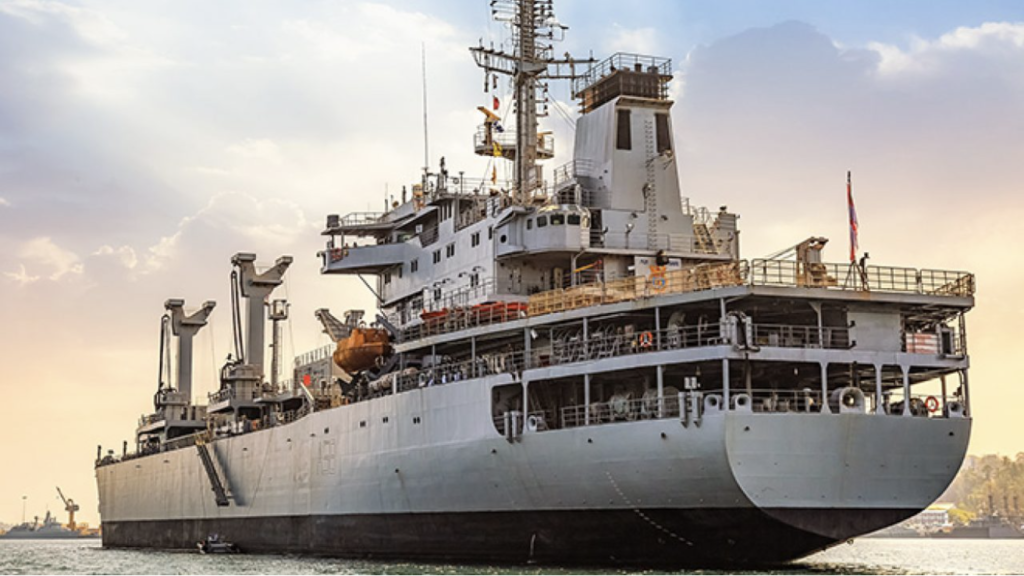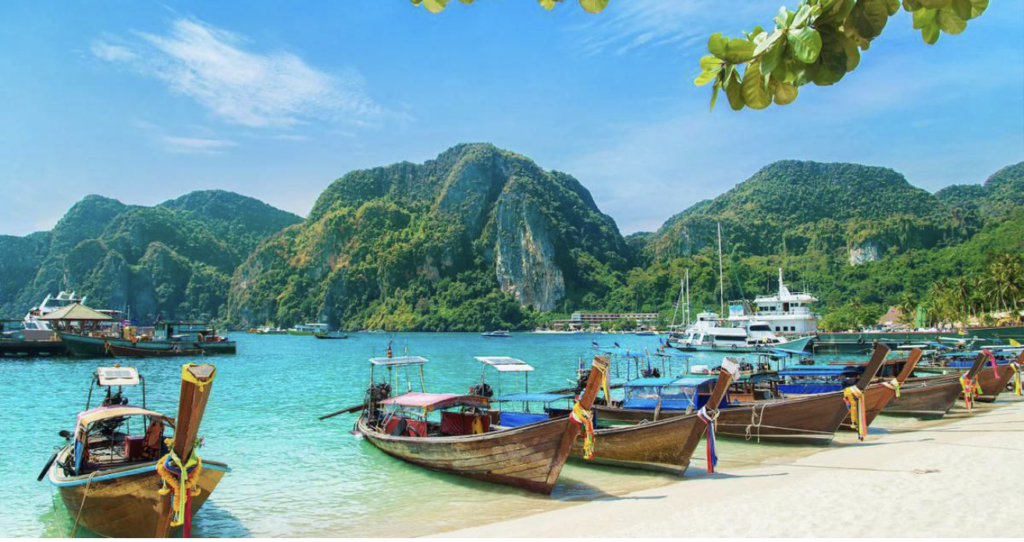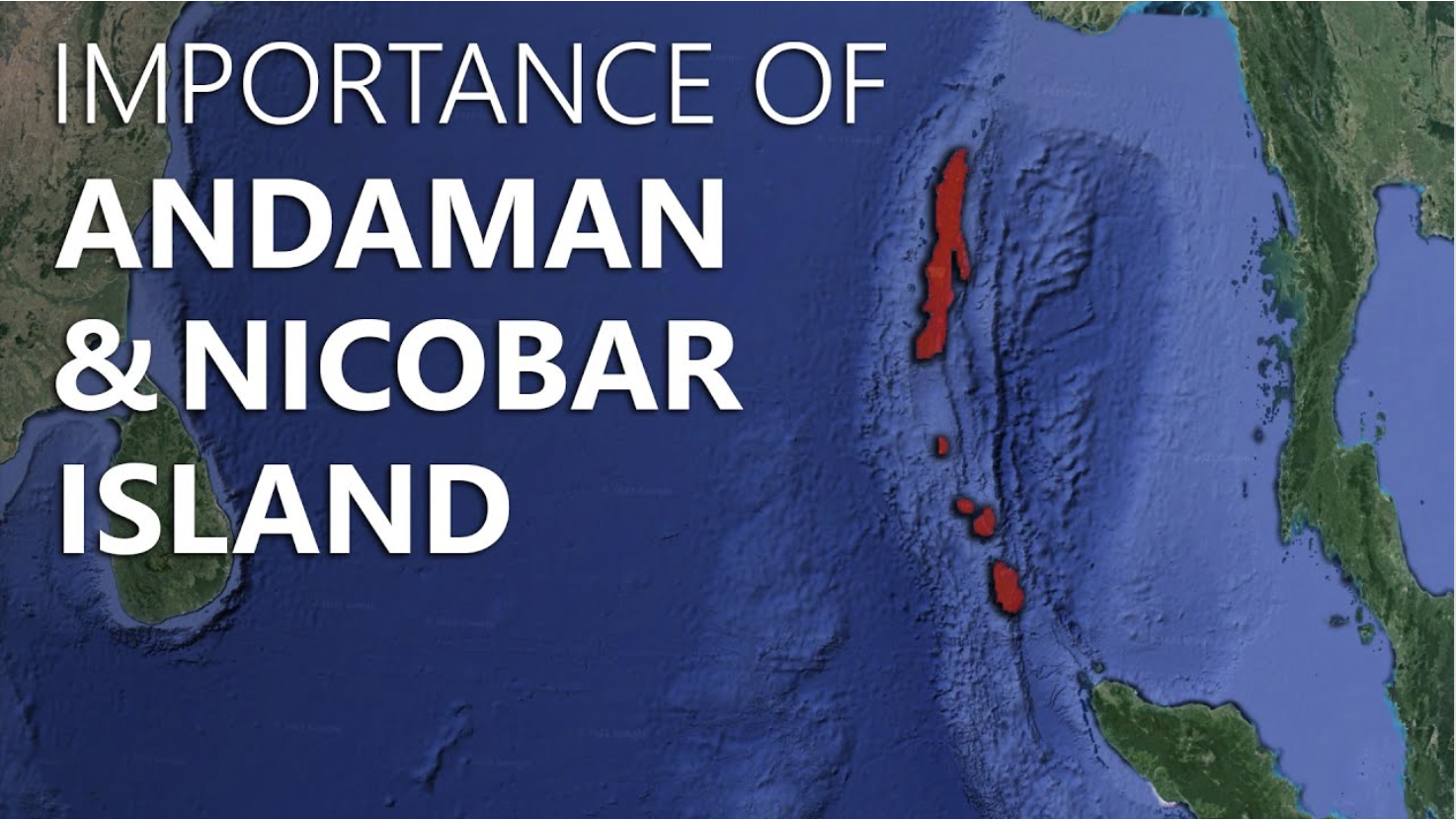Highlight: Andaman and Nicobar are the most strategically located island chains in the world, and the economic & strategic importance of Andaman and Nicobar island had a great value hub. In the coming section, you will find all the aspects behind the development of Andaman and Nicobar.
Andaman Nicobar Islands Developing Sino-Indian rivalry

This is demonstrated by China’s routine submarine deployment, the development of submarine surveillance networks, and the growth of Chinese naval bases with the establishment of a military outpost in Djibouti.
Additionally, China challenges India’s predominance in the Indian Ocean Region by expanding the Belt and Road Initiative as the Maritime Silk Path, whilst India has partnered with Japan and the US in the Malabar Naval Exercises.
Strategic Importance of Andaman and Nicobar Islands
India’s Look East Policy and Indo-Pacific Strategy have a significant impact on the role Andaman & Nicobar play in the evolution of the region’s security situation. These islands are at special place for India because they extend the country’s landmass and maritime border all the way to the mouth of the Malacca Strait. Utilizing these islands will strengthen India’s ties to the ASEAN nations, and it leads to boost strategic importance of Andaman and Nicobar Island.
Economic significance With Andaman and Nicobar Island

Nearly 30% of India’s exclusive economic zone is derived from the existence of these islands, which may be a potential source of underwater resources. The main community in these regions can be encouraged to develop an ecosystem of inland fisheries and aquaculture that is modernised and sustainable and is interwoven with the idea of the “Blue Economy.”
It is possible to conduct extensive hydrocarbon exploration, including the generation of methane gas hydrates and deep sea oil drilling. It is also possible to investigate the diverse environment for its medicinal plants and exotic plant species, as well as to spread sustainable agriculture and horticulture methods suitable for the local agro-climatic conditions.
Due to the area’s rich flora and fauna, appealing geographic locations, and attractive topography, tourism boost the economic importance of Andaman and Nicobar Island that can be promoted to benefit the region’s economy in a significant way.
Importance of Lakshadweep Islands on Economy
Due to the expansion of these islands, India now enjoys an exclusive economic zone and 20,000 km of territorial seas exclusive economic zone. The lagoons and Exclusive Economic Zone around the Lakshadweep Islands offer abundant economically useful mineral resources and fisheries.
The most direct route for ships going from the Persian Gulf destined towards East Asia is the Nine Degree Channel, which is situated close to the Lakshadweep Islands. These islands are crucial for ensuring the security of the Sea Lanes of Communications as well as for the maritime security of India. That’s why the importance of Andaman and Nicobar island and Lakshadweep boost significantly.
Because of their proximity to the western coast of India as well as to other island nations like Sri Lanka and the Maldives, their close proximity to busy shipping lanes, and their wide geographic spread. Following the 2008 Mumbai attacks, the islands have gained relevance in terms of national security.
India’s Efforts to Develop its Islands:
As per the economic & strategic importance of Andaman and Nicobar island. The Ministry of Defence established a single tri-service (land, sea, & air) theatre command in 2001 to take advantage of the strategic advantage these islands offered. Security forces have regularly conducted coastal security drills off the coastlines of Andaman (e.g., Tat Rakshak) and Lakshadweep (e.g., Neptune II).
Pre-offer talks have recently been held with potential investors for the Islands extensive social and infrastructure development program in an effort to attract private investors. The process of “Holistic Development of Islands” must be overseen by NITI Aayog.
In order to focus on community-based tourism for the overall development of the islands, the Island Development Agency was established in 2017. Major infrastructure projects, such as the building of Minicoy Airport, the renovation of Diglipur Airport near Port Blair, the expansion of satellite bandwidth, etc., are carried out under its auspices on a priority basis.
To promote tourism, the Ministry of Home Affairs has also loosened restrictions on visitors, such as the requirement for a Restricted Areas Permit to visit 29 inhabited islands.
Challenges Faced During Development of Andaman and Nicobar Island
- Environmental: Since more than 90% of the islands are made up of woods, many of which lack access to clean drinking water, it is difficult to consider the prospect of any new population. The only feasible solution, which has also received the blessing of the Indian Supreme Court, is to permit high-value, low-volume tourism on several islands. Mass tourism would likewise have an adverse impact on the delicate ecology.
- Geographical: Every development plan needs to take into account risks like the likelihood of earthquakes (a tsunami in 2004 was caused by an earthquake close to the Nicobar Islands).
- Infrastructure: The infrastructure works on strategic importance of Andaman and Nicobar even after many years, there is still no underwater cable connecting the mainland of India to the islands due to administrative challenges. Even at the naval installation in Port Blair, the country’s capital, internet access is reportedly patchy.
Since severe rains restrict development activity and the distance from the mainland raises construction expenses, road, airstrip, and even jetty construction is slow. The supervision of the southern group of islands is a significant issue. Only air and water now connect the two groups of islands due to the tsunami’s devastation of the route.
Steps to Enhance Regional Economic Activity in Andaman and Nicobar
Develop deep sea fishing off the Andaman coast because it is very sustainable to fish around these islands. Accelerate the plan to build a transhipment terminal at Campbell Bay in Great Nicobar, which is barely 90 kilometres from the Malacca Strait (the main sea route between the South China Sea and the Indian Ocean).
To form partnerships with the business sector and other nations in order to raise significant funds and acquire the administrative and technical expertise needed to carry out these projects effectively, and ultimately it added a significant part in strategic Importance of Andaman and Nicobar island.
Importance of Andaman and Nicobar in Tourism Sector
To demonstrate that it has effective authority and control over these areas, India has in the past encouraged mountaineering and adventure excursions in the Himalayas near international boundaries and opened Tawang to foreign visitors.
Allowing Indian and foreign tourists will help open up uninhabited islands where access is currently restricted (akin to China’s strategy in the South China Sea, where Hainan Island has become a major tourist destination). Create enclaves for desirable tourists inside the national parks of these islands (much like the Kruger National Park in South Africa).
It creates a clear policy that incorporates sufficient protection for marine-based activities including scuba diving, sailing, deep-sea fishing, live-aboard diving, etc. Such actions will prevent security concerns like poaching and environmental worries like the extinction of marine life has been added to the economic and strategic importance of Andaman and Nicobar.

